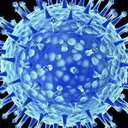Impaired AMPK‑CGRP signaling in the central nervous system contributes to enhanced neuropathic pain in high‑fat diet‑induced obese rats, with or without nerve injury.
Märksõnad
Abstraktne
Obesity is associated with increased sensitivity to pain, including neuropathic pain, but the precise mechanisms are not fully understood. Recent evidence has revealed that AMP‑activated protein kinase (AMPK) in the central nervous system (CNS) regulates the neuropeptide calcitonin gene‑related peptide (CGRP), a principal neurotransmitter of the class C nerve fiber, which serves an important role in initiating and maintaining neuropathic pain. AMPK has been demonstrated to be downregulated in the CNS in obesity. The present study hypothesized that obesity may lead to increased sensitivity to neuropathic pain by downregulating AMPK and upregulating CGRP expression levels in the CNS. Sprague‑Dawley rats consuming a high‑fat diet (HF) for 12 weeks developed obesity; they exhibited significantly decreased levels of phospho (p)‑AMPK and increased CGRP expression levels in the spinal cord (SC) and dorsal root ganglion (DRG), respectively, compared with rats consuming a low‑fat (LF) diet. HF‑fed rats that underwent spared nerve injury (SNI) also exhibited lower p‑AMPK and higher CGRP expression levels in the SC and DRG, compared with the corresponding LF‑diet rats. The 50% paw withdrawal threshold (PWT; as measured by Von Frey testing) was significantly lower in HF‑fed compared with LF‑fed rats, with or without SNI. Through intrathecal treatment, the AMPK activator 5‑aminoimidazole‑4‑carboxamide riboside (AICAR) or the CGRP antagonist CGRP8‑37 decreased CGRP expression levels and increased the 50% PWT; however, the AMPK inhibitor dorsomorphin augmented CGRP expression levels and further reduced the 50% PWT in HF‑fed rats, but not LF‑fed rats, with or without SNI. The results indicated that blocking the AMPK‑CGRP pathway may enhance neuropathic pain in HF‑induced obesity, with or without nerve injury. Targeting AMPK in the CNS may be a novel strategy for the prevention and treatment of obesity‑associated neuropathic pain.


